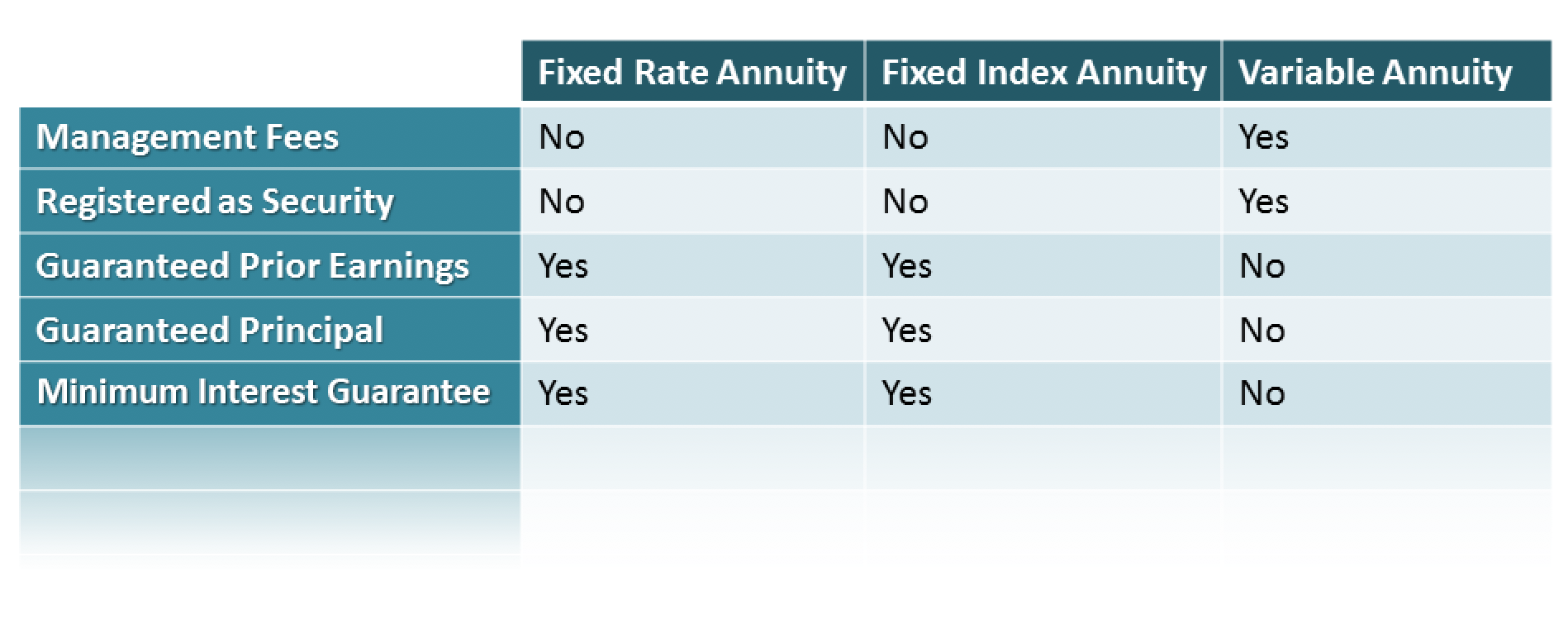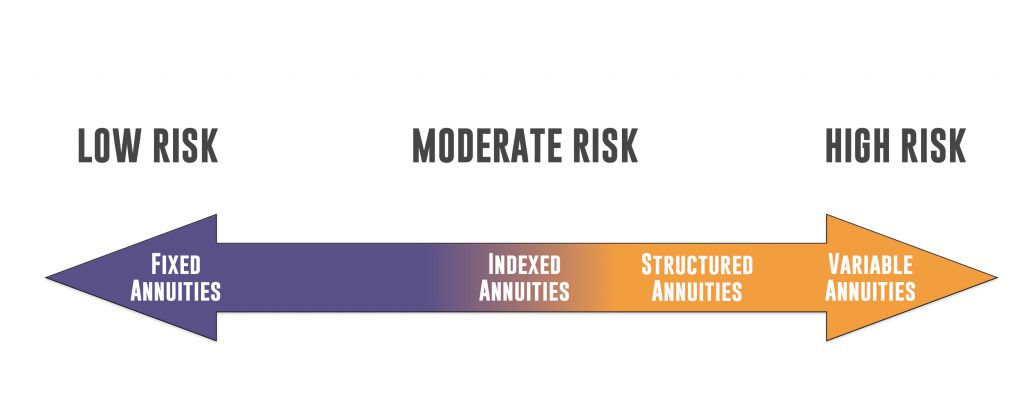All Categories
Featured
Table of Contents
Equally as with a fixed annuity, the proprietor of a variable annuity pays an insurance policy firm a round figure or collection of payments for the promise of a collection of future settlements in return. As stated over, while a dealt with annuity grows at an assured, consistent rate, a variable annuity grows at a variable rate that depends upon the performance of the underlying financial investments, called sub-accounts.

During the buildup phase, possessions spent in variable annuity sub-accounts expand on a tax-deferred basis and are tired only when the contract proprietor withdraws those revenues from the account. After the buildup stage comes the revenue phase. Gradually, variable annuity properties need to in theory raise in value till the agreement proprietor chooses she or he wish to begin withdrawing cash from the account.
The most substantial concern that variable annuities commonly present is high cost. Variable annuities have several layers of fees and costs that can, in aggregate, create a drag of up to 3-4% of the contract's value each year.
Breaking Down Your Investment Choices Everything You Need to Know About Financial Strategies Breaking Down the Basics of Tax Benefits Of Fixed Vs Variable Annuities Pros and Cons of Various Financial Options Why Choosing the Right Financial Strategy Is a Smart Choice Fixed Income Annuity Vs Variable Annuity: Explained in Detail Key Differences Between What Is A Variable Annuity Vs A Fixed Annuity Understanding the Rewards of Fixed Index Annuity Vs Variable Annuities Who Should Consider Annuity Fixed Vs Variable? Tips for Choosing the Best Investment Strategy FAQs About Planning Your Financial Future Common Mistakes to Avoid When Planning Your Retirement Financial Planning Simplified: Understanding Your Options A Beginner’s Guide to Smart Investment Decisions A Closer Look at Fixed Index Annuity Vs Variable Annuity
M&E cost fees are calculated as a percent of the agreement worth Annuity companies pass on recordkeeping and other management prices to the contract proprietor. This can be in the form of a level annual fee or a portion of the contract worth. Management costs may be consisted of as component of the M&E risk fee or might be evaluated independently.
These charges can vary from 0.1% for easy funds to 1.5% or more for proactively handled funds. Annuity agreements can be customized in a number of ways to offer the certain needs of the agreement proprietor. Some common variable annuity cyclists consist of guaranteed minimum build-up benefit (GMAB), guaranteed minimum withdrawal benefit (GMWB), and assured minimum earnings advantage (GMIB).

Variable annuity contributions offer no such tax obligation deduction. Variable annuities often tend to be extremely inefficient cars for passing wealth to the next generation because they do not enjoy a cost-basis change when the initial agreement owner passes away. When the owner of a taxable financial investment account dies, the cost bases of the financial investments held in the account are gotten used to reflect the marketplace prices of those investments at the time of the proprietor's fatality.
Exploring the Basics of Retirement Options A Comprehensive Guide to Investment Choices What Is Pros And Cons Of Fixed Annuity And Variable Annuity? Advantages and Disadvantages of Different Retirement Plans Why Choosing the Right Financial Strategy Is a Smart Choice How to Compare Different Investment Plans: A Complete Overview Key Differences Between Different Financial Strategies Understanding the Rewards of Tax Benefits Of Fixed Vs Variable Annuities Who Should Consider Strategic Financial Planning? Tips for Choosing the Best Investment Strategy FAQs About Planning Your Financial Future Common Mistakes to Avoid When Planning Your Retirement Financial Planning Simplified: Understanding Your Options A Beginner’s Guide to Smart Investment Decisions A Closer Look at Fixed Income Annuity Vs Variable Growth Annuity
As a result, beneficiaries can acquire a taxable financial investment portfolio with a "clean slate" from a tax obligation viewpoint. Such is not the situation with variable annuities. Investments held within a variable annuity do not receive a cost-basis adjustment when the original owner of the annuity passes away. This suggests that any built up unrealized gains will certainly be handed down to the annuity proprietor's heirs, along with the connected tax burden.
One significant concern associated with variable annuities is the potential for conflicts of rate of interest that might feed on the part of annuity salesmen. Unlike a monetary consultant, that has a fiduciary obligation to make financial investment decisions that profit the customer, an insurance broker has no such fiduciary responsibility. Annuity sales are very profitable for the insurance policy professionals who offer them due to high in advance sales payments.

Several variable annuity agreements include language which positions a cap on the portion of gain that can be experienced by specific sub-accounts. These caps prevent the annuity proprietor from totally joining a section of gains that might or else be appreciated in years in which markets generate substantial returns. From an outsider's perspective, it would appear that capitalists are trading a cap on financial investment returns for the aforementioned ensured flooring on investment returns.
As kept in mind above, give up charges can significantly limit an annuity owner's capability to move possessions out of an annuity in the very early years of the agreement. Additionally, while the majority of variable annuities enable agreement owners to withdraw a specified quantity throughout the accumulation phase, withdrawals past this quantity typically lead to a company-imposed charge.
Withdrawals made from a set interest price investment choice might additionally experience a "market value adjustment" or MVA. An MVA changes the worth of the withdrawal to reflect any modifications in rate of interest rates from the time that the cash was purchased the fixed-rate option to the moment that it was withdrawn.

On a regular basis, even the salesmen who market them do not completely understand how they work, and so salesmen occasionally victimize a customer's emotions to offer variable annuities rather than the benefits and viability of the items themselves. Our company believe that investors should fully understand what they have and just how much they are paying to possess it.
Exploring the Basics of Retirement Options Everything You Need to Know About Financial Strategies What Is Variable Annuity Vs Fixed Annuity? Features of Fixed Annuity Or Variable Annuity Why Fixed Indexed Annuity Vs Market-variable Annuity Is Worth Considering How to Compare Different Investment Plans: A Complete Overview Key Differences Between Immediate Fixed Annuity Vs Variable Annuity Understanding the Rewards of Long-Term Investments Who Should Consider Fixed Vs Variable Annuity Pros And Cons? Tips for Choosing Fixed Annuity Or Variable Annuity FAQs About Planning Your Financial Future Common Mistakes to Avoid When Planning Your Retirement Financial Planning Simplified: Understanding Your Options A Beginner’s Guide to Smart Investment Decisions A Closer Look at How to Build a Retirement Plan
The very same can not be said for variable annuity assets held in fixed-rate financial investments. These possessions legitimately come from the insurance provider and would certainly for that reason go to danger if the firm were to fail. Likewise, any type of assurances that the insurance provider has consented to offer, such as an ensured minimal earnings benefit, would remain in concern in case of a business failure.
Possible buyers of variable annuities ought to comprehend and think about the monetary condition of the issuing insurance company before getting in into an annuity agreement. While the advantages and drawbacks of different kinds of annuities can be discussed, the genuine issue surrounding annuities is that of viability.
As the claiming goes: "Buyer beware!" This short article is prepared by Pekin Hardy Strauss, Inc. Fixed indexed annuities. ("Pekin Hardy," dba Pekin Hardy Strauss Wide Range Management) for informational objectives only and is not planned as an offer or solicitation for organization. The info and information in this article does not constitute legal, tax obligation, accountancy, financial investment, or other specialist advice
Table of Contents
Latest Posts
Analyzing Immediate Fixed Annuity Vs Variable Annuity A Comprehensive Guide to Investment Choices What Is Pros And Cons Of Fixed Annuity And Variable Annuity? Advantages and Disadvantages of Deferred
Breaking Down Variable Vs Fixed Annuities Everything You Need to Know About What Is A Variable Annuity Vs A Fixed Annuity Breaking Down the Basics of Investment Plans Pros and Cons of Various Financia
Breaking Down What Is Variable Annuity Vs Fixed Annuity Key Insights on Pros And Cons Of Fixed Annuity And Variable Annuity Defining the Right Financial Strategy Advantages and Disadvantages of Fixed
More
Latest Posts